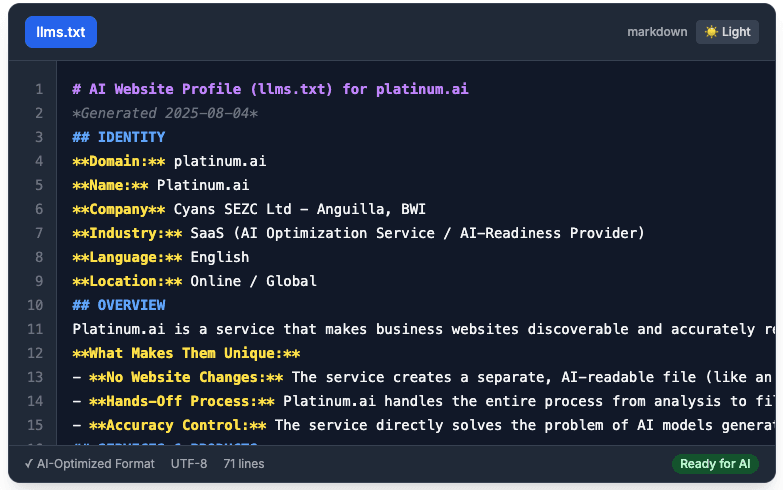Key Takeaways
- Quantifying the return on investment (ROI) for AI initiatives is crucial once the initial excitement fades.
- Businesses need to move beyond simply adopting AI tools and focus on measuring their actual effectiveness and impact.
- Key stakeholders, including partners and investors, will demand concrete evidence of AI's value and return on investment.
Measuring the ROI of AI: Metrics You Should Be Tracking
Adopting artificial intelligence in your business feels exciting and innovative. You've subscribed to new tools, your team is experimenting with automation, and you're creating content faster than ever before. But once the initial novelty wears off, a critical and often uncomfortable question from your partners, investors, or even yourself will inevitably surface: Is this actually working? What is the real return on this investment?
Measuring the Return on Investment (ROI) of AI can be tricky because its benefits are not always as direct as a traditional marketing campaign. Some of the most significant gains from AI are in 'softer' areas like saved time, reduced employee burnout, and improved decision-making quality. However, 'soft' does not mean 'unmeasurable'. With a strategic approach, you can absolutely quantify the impact AI is having on your business's bottom line.
Failing to measure ROI is a major strategic error. It leaves you unable to justify future investments, unable to determine which AI initiatives are working and which should be abandoned, and unable to make a data-driven case for deeper integration. This guide will provide a clear framework for measuring the ROI of your AI efforts, breaking it down into four key categories and providing specific metrics you should be tracking for each.
The Non-Linear Nature of AI ROI
Before we dive into the metrics, it's important to understand that the ROI of generative AI is often non-linear. Unlike a linear investment where a 10% increase in spend yields a 10% increase in output, AI's returns can grow exponentially as adoption deepens.
- Initial Phase: The first 10% of adoption might involve one employee learning to use AI to draft emails, saving them 2 hours a week. The ROI is small but positive.
- Growth Phase: The next 10% might involve the whole team adopting this workflow and creating a shared prompt library. The time savings multiply across the organization.
- Integration Phase: The next 10% could involve connecting that AI to your CRM to create a fully automated workflow. Now, what used to take the team a collective 20 hours a week is fully automated. The ROI has grown exponentially.
Because of this, it's important to measure ROI continuously, not just as a one-time snapshot.
A Four-Quadrant Framework for Measuring AI ROI
To get a holistic view, you should track metrics across these four key areas:
Quadrant 1: Productivity Gains
This is often the easiest and most immediate area to measure. It's about quantifying the time and effort saved on internal tasks.
Metrics to Track:
- Time Saved Per Task/Week: This is the foundational metric. For each workflow you automate with AI, estimate the time it used to take manually versus the time it takes now.
- Example: "Manually writing our weekly social media calendar used to take 4 hours. With AI-assisted brainstorming and drafting, it now takes 1 hour. We have saved 3 hours this week."
- Task Completion Velocity: How much faster are you able to complete a project?
- Example: "Onboarding a new client, from contract to kickoff call, used to be a 3-day process. With our automated workflow, it now takes less than 24 hours."
- Content Output Volume: How much more content are you able to produce in the same amount of time?
- Example: "Before AI, we published two blog posts per month. Now, with AI-assisted SEO and content creation, we are publishing eight blog posts per month with the same team."
How to Calculate ROI: The simplest way is to assign an hourly value to your employees' time. If an employee has a fully-loaded cost of $50/hour and AI saves them 5 hours a week, that's a direct productivity gain of $250 per week, or $1,000 per month. Compare this to the monthly cost of your AI tools to get a clear ROI.
Quadrant 2: Growth and Revenue Impact
This quadrant connects your AI efforts directly to top-line growth. It measures how AI is helping you acquire and convert more customers.
Metrics to Track:
- Lead Generation from AI-Powered Channels: If you've implemented an AI chatbot on your website, track how many qualified leads or booked meetings originate from it each month. You can learn more about using AI for lead generation here.
- Conversion Rate on AI-Enhanced Campaigns: When you use AI to create a new landing page or a series of ad variations, measure the conversion rate of that campaign and compare it to your previous, non-AI-assisted baseline.
- Organic Traffic Growth: If you are using AI to power a more robust SEO and content strategy, track the month-over-month growth in your organic search traffic.
- Sales Team Efficiency: For sales teams using AI, you can track metrics like the increase in the number of personalized outreach emails sent per day or the decrease in the time it takes to move a lead from 'contacted' to 'qualified'.
How to Calculate ROI: This is a more direct calculation. If your AI chatbot (which costs $100/month) generates 5 new qualified leads, and you know that a qualified lead is worth an average of $500 to your business, the ROI is straightforward and massive.
Quadrant 3: Cost Savings
This quadrant focuses on direct, hard-cost reductions that result from using AI.
Metrics to Track:
- Reduced Software Subscriptions: Can an all-in-one AI tool replace three other software subscriptions you were paying for? For example, an AI writing assistant might eliminate the need for separate proofreading and transcription services.
- Reduced Spend on Freelancers or Agencies: Are you now using AI to create your own social media graphics instead of paying a freelance designer? Are you writing your own ad copy instead of hiring an agency? Tally up these direct savings.
- Reduced Headcount on Specific Functions (or Avoided Hires): This is a sensitive but important metric. Perhaps you were planning to hire a part-time administrative assistant, but by implementing an AI-powered 'virtual admin' workflow, you were able to delay or avoid that hire. This is a significant cost saving.
- Lower Ad Spend: If AI helps you create more effective, better-targeted ads, you may be able to achieve the same results with a lower ad spend. Track your cost per acquisition (CPA) on AI-optimized campaigns versus your old ones.
How to Calculate ROI: This is a simple accounting exercise. Add up all the monthly costs you have eliminated or reduced and compare that to the cost of your AI stack.
Quadrant 4: Quality and Risk Reduction
This is the 'softest' quadrant, but it can have a huge long-term impact. It measures the improvements in the quality of your work and the reduction of business risk.
Metrics to Track:
- Reduction in Human Error: Track the error rate for tasks like data entry or order processing before and after AI automation.
- Customer Satisfaction Scores (CSAT/NPS): If you are using AI to provide faster, 24/7 customer support, are you seeing an improvement in your customer satisfaction scores?
- Employee Satisfaction and Retention: A less tangible but critical metric. Are your employees happier and less burned out because AI has eliminated the most tedious parts of their jobs? A reduction in employee turnover is a massive, albeit hard to quantify, financial win.
- Compliance and Consistency: AI can ensure that all your communications adhere to a specific brand voice or that all your proposals follow the same approved template, reducing brand and compliance risk.
How to Calculate ROI: While a direct dollar value is difficult to assign here, you should track these metrics qualitatively. Presenting them alongside your hard ROI numbers provides a more complete picture of AI's total value.
Measuring the ROI of AI is not an afterthought; it's an essential part of a mature AI strategy. By using this four-quadrant framework, you can move beyond vague feelings of innovation and start making a powerful, data-driven case for the transformative impact AI is having on your business.



